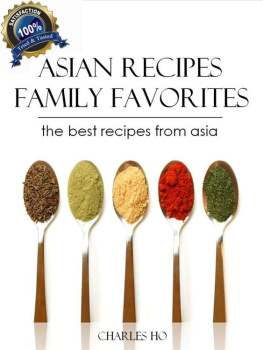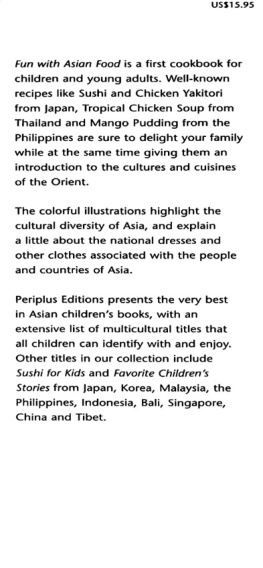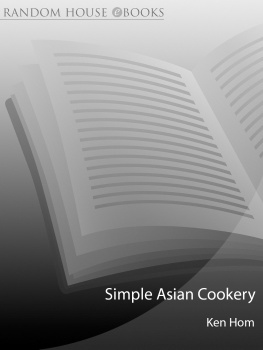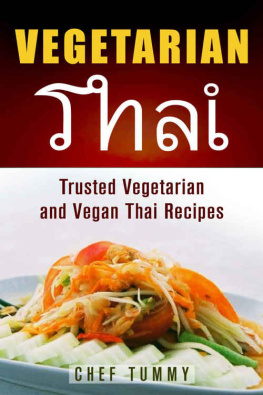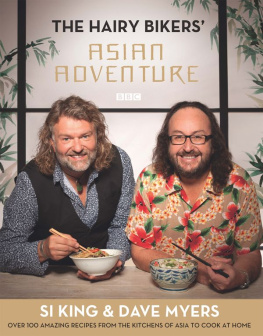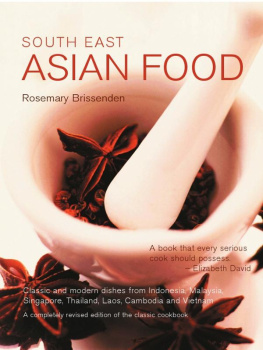ASIAN RECIPES
FAMILY FAVORITES
the best recipes from asia
By Charles Ho
Copyright by Charles Ho 2012
All rights reserved. No part of this report may be reproduced or transmitted in any form whatsoever, electronic, or mechanical, including photocopying, recording, or by any informational storage or retrieval system without express written, dated and signed permission from the author.
Dedication
This book is dedicated to my dad, a master chef and gourmet mentor.
Introduction
Live to eat, or eat to live
What can be said about this region is that it is truly a paradise for food lovers. Each country has its own food history much influenced by its culture, religion and past. Vietnamese food for example, retains the flavors of centuries of French occupation. The food in Philippines has the taste of Spanish and American accents while in Malaysia and Indonesia which are Muslim countries, pork meals are almost completely eliminated off the menu.
But even if each country has its own food history, they still have much in common. Their foods share many ingredients and the methods of making the food has many similarities. And last but not least, they all share the same good taste.
Asian food is a multi-faceted and diverse as European food. While neighboring countries share some common ingredients and cooking styles, Asian countries have developed cuisines that are uniquely their own. Sampling the food of each is truly an adventure.
Asian recipes were casually shared among the womenfolk in Asia, who generally got together after a long days work, to discuss the days events. Many of these recipes were guarded as important family secrets and carefully passed down from one generation to another. Asian cooking has enormous potential in modern times, as Asian food chains are springing up all over the world very rapidly, whilst enjoying immense popularity.
Although it's been around for thousands of years, Asian food has unexpectedly become the smart new food. Restaurant chefs from the East to West are introducing Asian ingredients and cooking techniques into their repertoire, suburban green grocers and supermarkets are stocking fresh coriander and lemon grass, full of flavor, and never boring or bland. Today many of the herbs, spices, vegetables and other items needed to create authentic Asian dishes are readily available, often in local supermarkets. The more unusual ingredients can be found in Asian food stores. With its emphasis on grains and vegetables, it is also healthy, cheap and often quick to prepare. Yet, it's dangerous to generalize.
In addition to unique cuisines from Asia, Western cultures were also introduced to the unique tools used to prepare Asian food. Perhaps the most important is the wok. The wok is the most important piece of cooking equipment in South-East Asia and China.
In this appetizing book, you will find an inspiration not only for your daily dishes, but for almost every occasion which calls for something savory - Asian style/dish/cuisine. All the recipes included in this book are considered classics, and have proven so popular over the past years. Every single recipe has been tested time and again, both by me and by hundreds of my cooking students.
They are all authentic and thoroughly tried and tested. By following simple, clear and straightforward instructions, you will find a recipe that will suit your needs and wants to the littlest details. Most of the recipes use basic cooking techniques which can be prepared with only a few pots and utensils.
This recipe book will help you cook Asian food with confidence and pleasure that you thought you could not make in your own kitchen. More importantly, it will provide you with all the answers to the problem of ''What shall we have for breakfast, lunch or dinner?'' and you will discover that Asian cooking is so rewarding and fun. So, this book contains The Best Traditional Asian Recipes for you to make and enjoy at home.
The recipes have been divided by Asian regions. Each chapter contains top recipes which will help you find exactly what you are looking for.

Table of Contents
East Asian Recipes
Ingredients common to many cultures in the east regions of the continent include rice, ginger, garlic, sesame seeds, chilies, dried onions, soy, and tofu. Stir frying, steaming, and deep frying are common cooking methods.
While rice is common to most Asian cuisines, different varieties are popular in the various regions; Basmati rice is popular in the subcontinent, Jasmine is often found across the southeast, while long-grain rice is popular in China and short-grain in Japan and Korea. Curry is not as popular in eastern cuisines.
Those curry dishes with origins in India and other South Asian countries usually have a yogurt base while Southeastern and Eastern curries generally use coconut milk as their foundation. East Asian cuisine evolved with the common usage of oils, fats and sauces in the preparation of dishes.
Chinese Recipes
Eating is a dominant aspect of Chinese culture. In China, eating out is one of the most accepted ways to honor guests. Similar to Westerners drinking in a bar with friends, eating together in China is a way to socialize and deepen friendship. Chinese cuisine has become increasingly popular in other parts of the world from Asia to the Americas, Australia, Western Europe and Southern Africa.
In most dishes in Chinese cuisine, food is prepared in bite-sized pieces, ready for direct picking up and eating. In traditional Chinese cultures, chopsticks are used at the table. Traditional Chinese cuisine is also based on opposites, whereby hot balances cold, pickled balances fresh and spicy balances mild. Rice is a major staple food for people from rice farming areas in southern China. Rice is also used to produce beers, wines and vinegars. Rice is one of the most popular foods in China and is used in many dishes.
China is home to soy sauce, which is made from fermented soya beans and wheat. Oyster sauce, transparent rice vinegar, fish sauce among others is also widely used. Spices and seasonings such as fresh root ginger, garlic, spring onion, white pepper, and sesame oil are widely used in many regional cuisines. Herbs are also important to the Chinese people. China was the earliest country to cultivate and drink tea which is enjoyed by people from all social classes. Some of these are green tea, oolong tea, black tea, scented tea, white tea, and compressed tea. China is the worlds largest exporter of green tea.
Quick wet heat cooking methods usually include boiling or braising ingredients in sauces of broths for short periods of time. Another method, scalding, is par cooking by quick immersion of raw ingredients into boiling water or broth, sometimes followed by immersion in cold water. Other methods of cooking include stewing in ceramic, gradual simmering, smoking, deep frying and stir frying. Chinese desserts are sweet foods and dishes that are served with tea, along with meals or at the end of meals in Chinese cuisine. Chinese dessert soups typically consist of sweet and usually hot soups and custards.
General Tso's Chicken
Deep-Fried Chicken Dish with Sweet and Spicy Flavor
( 4 -6 servings )
Recipe Ingredients:
1lb boneless skinless chicken thighs, sliced into 1 inch cubes
1 tablespoon dry sherry wine (Shaoxing wine)
2 eggs, beaten
1 cup of cornstarch
1 teaspoon salt
6 thinly slice peeled ginger
2 cloves garlic, finely minced
Next page
